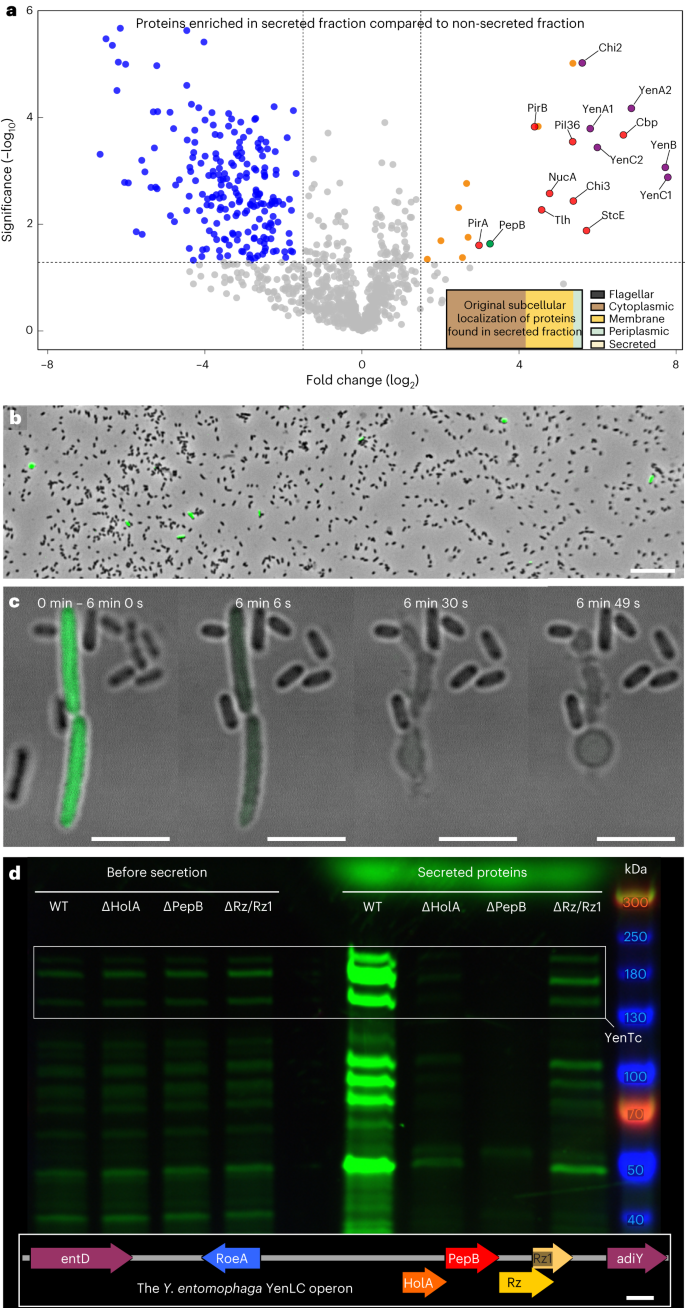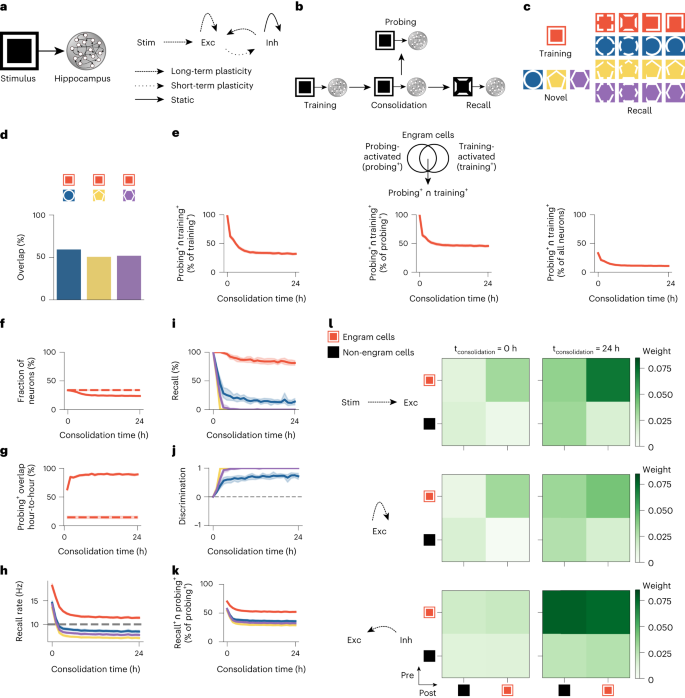2024-01-18 マックス・プランク研究機構
◆この独自の分泌戦略は、細菌の行動が分化と利他主義の特徴を示す点で注目に値し、将来的には病原性細菌への新しい治療法の可能性を示唆しています。
<関連情報>
- https://www.mpg.de/21414471/0118-moph-single-celled-kamikazes-spearhead-bacterial-infection-151445-x
- https://www.nature.com/articles/s41564-023-01571-z
エルシニア・エントモファーガTc毒素はT10SS依存的に特殊化した細胞亜集団を溶解することで放出される Yersinia entomophaga Tc toxin is released by T10SS-dependent lysis of specialized cell subpopulations
Oleg Sitsel,Zhexin Wang,Petra Janning,Lara Kroczek,Thorsten Wagner & Stefan Raunser
Nature Microbiology Published:18 January 2024
DOI:https://doi.org/10.1038/s41564-023-01571-z

Abstract
Disease-causing bacteria secrete numerous toxins to invade and subjugate their hosts. Unlike many smaller toxins, the secretion machinery of most large toxins remains enigmatic. By combining genomic editing, proteomic profiling and cryo-electron tomography of the insect pathogen Yersinia entomophaga, we demonstrate that a specialized subset of these cells produces a complex toxin cocktail, including the nearly ribosome-sized Tc toxin YenTc, which is subsequently exported by controlled cell lysis using a transcriptionally coupled, pH-dependent type 10 secretion system (T10SS). Our results dissect the Tc toxin export process by a T10SS, identifying that T10SSs operate via a previously unknown lytic mode of action and establishing them as crucial players in the size-insensitive release of cytoplasmically folded toxins. With T10SSs directly embedded in Tc toxin operons of major pathogens, we anticipate that our findings may model an important aspect of pathogenesis in bacteria with substantial impact on agriculture and healthcare.


